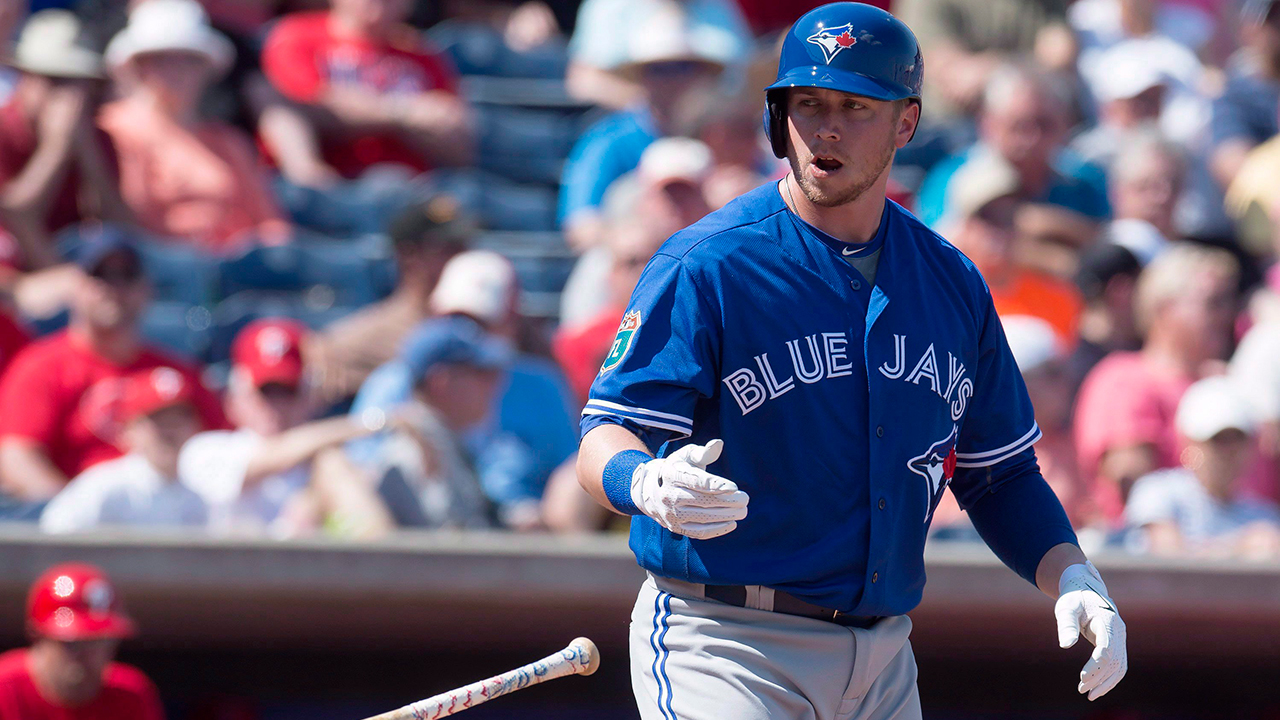BALTIMORE – Through the season’s first 2½ weeks, Justin Smoak’s numbers are a case study in weird.
In 13 games heading into Wednesday night’s action, the Toronto Blue Jays first baseman is batting .143 with an on-base percentage of .455; he’s 2-for-14 with 12 strikeouts, leaving him with a BABIP of 1.000; his walk rate is 31.8 per cent with seven bases on balls in 22 plate appearances; and for good measure, he’s even got a stolen base, his first since 2012.
You can look at his stat-line and argue that he’s off to a rough start, or that he’s made steady contributions, and be right either way.
“It’s pretty messed up, right?” Smoak says with a sheepish grin in the Blue Jays clubhouse, before trying to make some sense of his at-odds performance. “The times I’m taking my walks is when I’ve been on time, and the times when I’ve punched out I’m not on time. When you’re walking, you’re seeing the ball well, but I just feel like the first couple of weeks I just haven’t been on time really at all.”
The past few days suggest that the 29-year-old may be turning the corner on that front.
After taking an 0-for-4 Friday against the Boston Red Sox while facing Rick Porcello, Smoak worked pinch-hit walks off Matt Barnes on Sunday and Koji Uehara on Monday to start him rolling. Tuesday against the Baltimore Orioles, he collected two more walks and ripped a solid single off Mike Wright.
Some steady playing time has helped.
From April 6-14, Smoak managed just seven plate appearances, while fellow first baseman Chris Colabello has started consecutive games only once this year. Manager John Gibbons admitted getting them both enough playing time “is a tough balancing act,” a matter exacerbated by some first-base games lost when Edwin Encarnacion had to play the field while Josh Donaldson nursed a sore calf.
“They both need at-bats,” conceded Gibbons.
Smoak only started feeling better during his walk against Barnes, gaining confidence when he fouled off a fastball he felt he was right on.
“Not playing every day, when you get in there, sometimes you feel for what you want to be feeling, and the next thing you know the ball’s in the catcher’s mitt,” says Smoak. “Friday night against Porcello, the guy’s throwing 88, 90 miles an hour, I got a couple of pitches to hit and I couldn’t even pull the trigger because I wasn’t ready to hit. I was more feeling for it.”
Being ready to hit starts with a batter locking down his timing, usually signified by the hitter being able to land his front and move his hands into a strong position to unleash a swing.
“CC will tell you, too, it’s not like we’ve been in there every day getting consistent at-bats to get our rhythm and timing,” says Smoak. “Even some guys in there every day are still trying to feel for that, but it’s just a matter of getting in there more often to be able to get in that timing. I feel like coming out of spring training it was probably the best I’ve ever felt, then I went basically a week there without playing. You can turn up the pitching machine inside the cage as high as you can, but it doesn’t really simulate what’s happening when you actually get out there. It’s just a matter of getting in there more often and getting some more ABs.”
Smoak knows better than to worry about his unusual stats, and that over time his numbers will normalize. The challenge he faces now is in not letting the stark number of strikeouts get to him, and to just keep taking his rips.
“The only way you’re going to know where you’re at is if you go up there swinging the bat, you don’t know where you’re at if you’re not swinging the bat,” he says. “If I’m taking a bunch of pitches, that’s not doing anything for me.
“When you go out there, it’s more be ready to hit and whatever happens, happens.”









